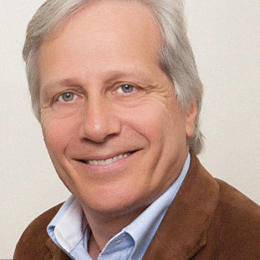the person On A Mission to turn Silicon Valley Into Gallium Valley
Alex Lidow, scion of an engineering dynasty, thinks the essential subject matter at the heart of the tech industry needs to alter.
September 23, 2015
In 1977, when he used to be 22 years outdated, inventor Alex Lidow had the form of eureka second most techies would kill for. while in graduate school at Stanford, Lidow co-invented, along with Thomas Herman, one of those device called the HEXFET energy MOSFET that may make his family’s old firm, world Rectifier, greater than $930 million in royalties. And it grew to become Lidow’s grandfather, a Lithuanian Holocaust survivor, and his father, who fled Berlin in 1937, into important players within the hardware trade.
Now, with the winds of historical past at his back, Lidow is embarking on a new mission: he is trying to do nothing less than upend the tech trade’s reliance on silicon.

Lidow, 60, is currently head of a company referred to as environment friendly power Conversion, and is without doubt one of the tech world’s loudest advocates for making transistors and semiconductors from gallium nitride. Silicon is traditionally used for the transistors and semiconductors on which the know-how industry relies. this is an amazingly rewarding industry: in keeping with the Semiconductor industry association, which represents U.S.-based corporations, the international semiconductor industry was once answerable for roughly $335.eight billion of gross sales final 12 months alone.
Gallium nitride (GaN), which has been used by hardware companies because the Nineteen Nineties, conducts electrical energy higher than silicon however has historically been pricey to provide and use. however because of sharply declining production costs, EPC is making a bet gallium nitride can gas a tech revolution for everything from wireless electrical chargers to drone aircraft to industrial electronics.
Lidow asserts that if you happen to depend executive, bank, and company financing, there may be greater than $975 million already invested in gallium nitride for power use. whereas that is small potatoes compared to the money invested in silicon for such purposes, it can be a substantial probability for rising firms.
The family combat
Gallium nitride can also be at the coronary heart of a fierce skilled struggle. which is as a result of Alex Lidow grew as much as develop into world Rectifier’s longtime CEO, however, in a swirl of controversy, he and his father both departed the corporate within a yr of each different. The respectable story is that Lidow resigned from world Rectifier after an inside investigation showed accounting irregularities at a subsidiary company in a foreign country. but he informed fast company that he used to be, in reality, compelled out.
“I used to be fired from global Rectifier,” Lidow says. “I had no employment contract or golden parachute or non-compete after my father used to be additionally pushed out a few months later. I was once fifty two years old and primarily had to start over. I went for the thing I all the time dreamed of when you consider that grad faculty: changing silicon. That’s what I went for—the most important market.”
international Rectifier and Lidow filed countering suits against one another regarding Lidow’s contentious departure, prior to settling out of court in 2013. underneath the terms of the settlement as published in 2013, EPC has to pay global Rectifier royalties unless this 12 months; other terms of the agreement are private.
much less diplomatically, Lidow told the la trade Journal, “i am going to head after their intestine. I’m their worst nightmare.” EPC’s major product line, a sequence of transistors and built-in circuits aimed toward hardware producers based on GaN instead of silicon, is designed to compete straight away with international Rectifier.

A post-Silicon World?
once I arrived prior this year at EPC’s place of job, in a tech-heavy hall of low-slung place of work structures simply south of los angeles international Airport in the suburb of El Segundo (safeguard contractor Raytheon and gaming publisher square Enix are nearby neighbors), Lidow proved, now not extraordinarily, a passionate partisan for gallium nitride.
“There’s a tighter chemical bond between gallium and nitrogen [than silicon],” Lidow tells me. “consequently, you’re in a position to make units which are smaller.” This can also be moderately useful for products as various as wi-fi chargers for computer systems and smartphones, and LIDAR navigating devices for self reliant vehicles and drone aircraft.
One problem EPC and their other rivals face is the truth that silicon is so well entrenched within the semiconductor business. in the intervening time, discussions of the virtues of silicon versus gallium or other various supplies are largely tutorial or restricted to small corners of the hardware trade. Silicon-primarily based semiconductors and transistors make the most of an current and large provide chain, infrastructure, and community of vendors.
Lidow seems undaunted through this fact. His workplace is stuffed with demonstration chips and brochures, lots of them in chinese language and jap, created for the international manufacturers that make up a big proportion of the company’s customer base. EPC’s cofounder is a Taiwanese entrepreneur, Archie Hwang, and some of the firm’s shoppers are in Taiwan, China, South Korea, and Japan. according to Lidow, more than 50% of the company’s purchases come from the East Asian market.
EPC is one of many avid gamers within the gallium nitride chip area. other corporations embrace GaN techniques, Cambridge Electronics, and Navitas techniques. building GaN-based totally chips and systems continues to be in its relative infancy, on the other hand; even if gallium nitride transistors are now reportedly cheaper than their silicon counterparts, silicon has a long lead in the case of research and building, purchaser alleviation, and manufacturing infrastructure.

Launching Hardware
When Hwang and Lidow launched EPC in 2007, they started the corporate basically from scratch. Lidow was broke however had a industry variation and lengthy expertise within the container; Hwang equipped an undisclosed seed amount of funding and access to underused silicon foundries for manufacturing. After Lidow received access to cash that had been frozen as a result of the legal issues between EPC and his previous company, he ultimately invested in EPC as smartly.
“i feel the good thing about being bad is that we did much more for a lot less,” Lidow says. One instance of that is his company’s emphasis on small and reasonably underserved emerging know-how verticals similar to wireless chargers. His company now produces approximately a hundred products for over 500 shoppers.
And gallium nitride is being used for brand new purposes as various as Patriot missile techniques and LED lights.
Lidow says his company has captured more than ninety% of the rising gallium nitride market. He nonetheless has an extended technique to go to seriously problem silicon’s dominance in tech—but his agency is off to a formidable begin. the actual query is what’s going to happen in coming years as wireless charging, independent vehicles, and drone plane—all areas through which gallium nitride are used—transform extra not unusual. Silicon Valley, it seems, would possibly just have to make more space for non-silicon supplies.
(82)

